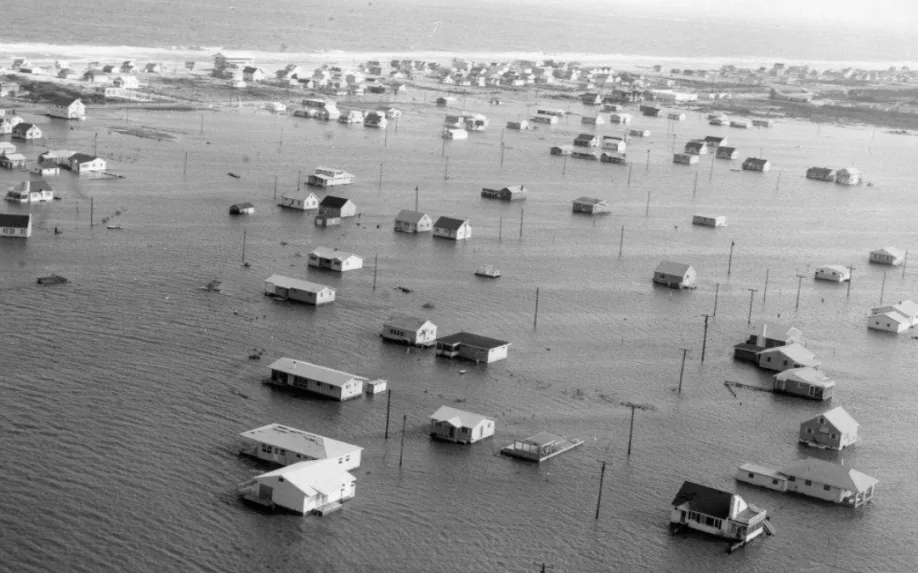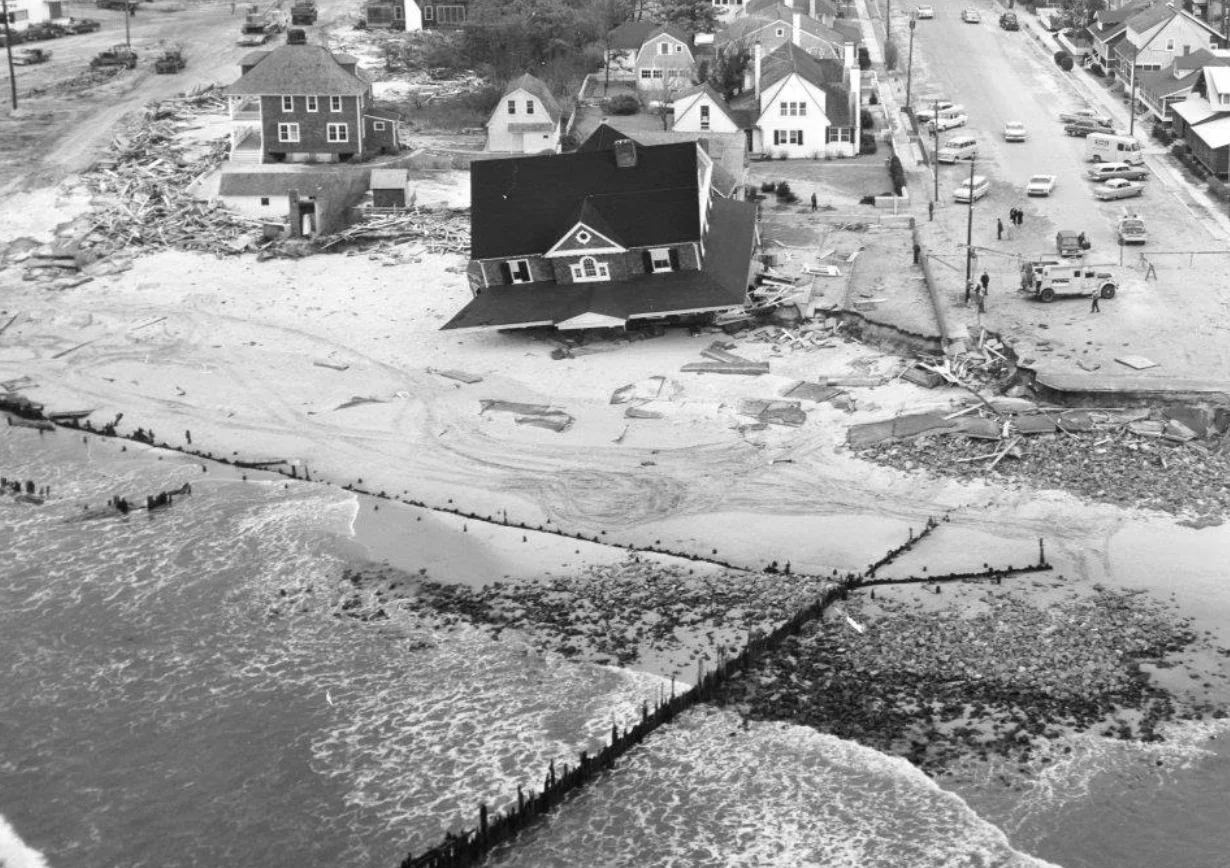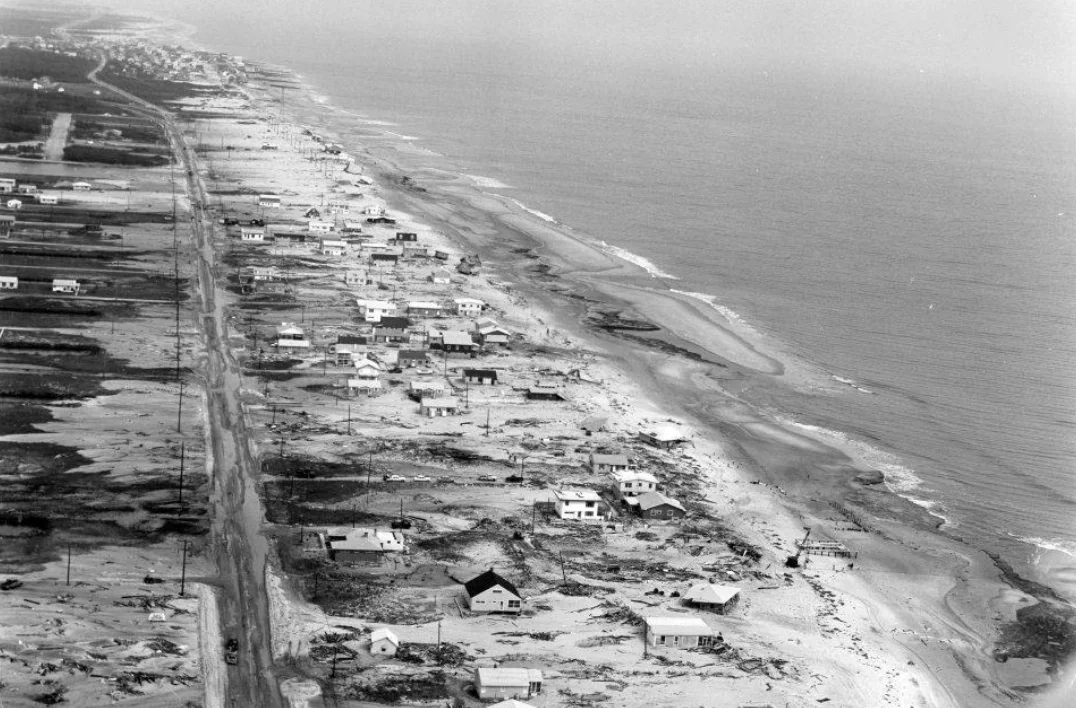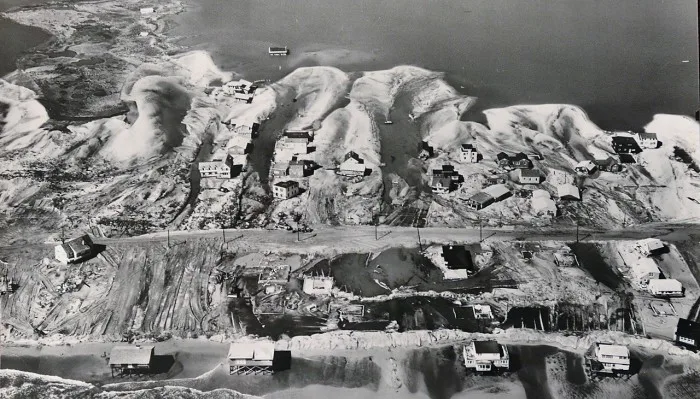
Before Hurricane Sandy, there was the Ash Wednesday Storm of 1962
This Day In Weather History is a daily podcast by Chris Mei from The Weather Network, featuring stories about people, communities and events and how weather impacted them.
--
Hurricane Sandy is one of the worst storms to hit New Jersey. On Oct. 22, 2012, Sandy damaged 346,000 houses and killed 37 people. Before Sandy's devastation, the Ash Wednesday Storm of 1962, also known as the Great Atlantic Coastal Storm, was the worst storm to hit New Jersey.
From March 5-9, 1962, the Ash Wednesday Storm battered the mid-Atlantic coast of the United States. The storm was particularly bad because it did not move for three days.
Most similar storms will move fast, impacting an area for a more isolated period. The Ash Wednesday Storm essentially stayed put, repeatedly flooding areas with five high tides.

Rehoboth Beach. A house that was across the street until it was swept out to sea in the storm. Courtesy of NOAA/Delaware Public Archives
New Jersey was the most impacted state, but other areas also flooded, and the Southeast received extreme snowfall.
Overall, the storm killed 40 people, injured over 1,000 more, destroyed 1,793 houses, and damaged another 16,782.
Click here to subscribe to This Day in Weather History
The storm started forming on March 4, 1962, when a large low-pressure area developed along a cold front near the southeast coast of the States. While this was happening, a large ridge was over Atlantic Canada, and an upper-level low was over the Ohio Valley.
The storm interacted with the ridge, which produced hurricane-force wind gusts along the mid-Atlantic coast. The storm also created a 970 km/h-long fetch of flow of winds from the Atlantic Ocean, which produced 9.1-metre-high waves.
The storm affected some southeastern and inland states, but the mid-Atlantic states and New England got the worst of it.

The storm's aftermath in Delaware. Courtesy of NOAA/Delaware Public Archives
In Norfolk, Virginia, 2.5-metre tides flooded thousands of cars and damaged thousands of houses.
New York also received high waves and tides up to 6.1 metres, which washed away about 100 houses and flooded coastal roads.
In New Jersey, more specifically, along the Jersey Shore, wind gusts reached 117 km/h. High waves changed the state's coastline. Five areas in Long Beach Island flooded. Around 4,000 houses were destroyed and another 40,000 were severely damaged.

Beach erosion and flooding in Harvey Cedars, New Jersey. Courtesy of Wikipedia
Atlantic City flooded, and about 2,000 stranded residents needed to be evacuated by army trucks and helicopters.
In New Jersey, there 14 fatalities and 12 missing people. President John F. Kennedy declared a disaster area for areas in New Jersey.
To hear more about the Ash Wednesday Storm of 1962, listen to today's episode of "This Day In Weather History."
Subscribe to 'This Day in Weather History': Apple Podcasts | Amazon Alexa | Google Assistant | Spotify | Google Podcasts | iHeartRadio | Overcast'
Thumbnail: The storm's aftermath in coastal Delaware, Bethany Beach - Indian River, 1962. Courtesy of NOAA/Delaware Public Archives









